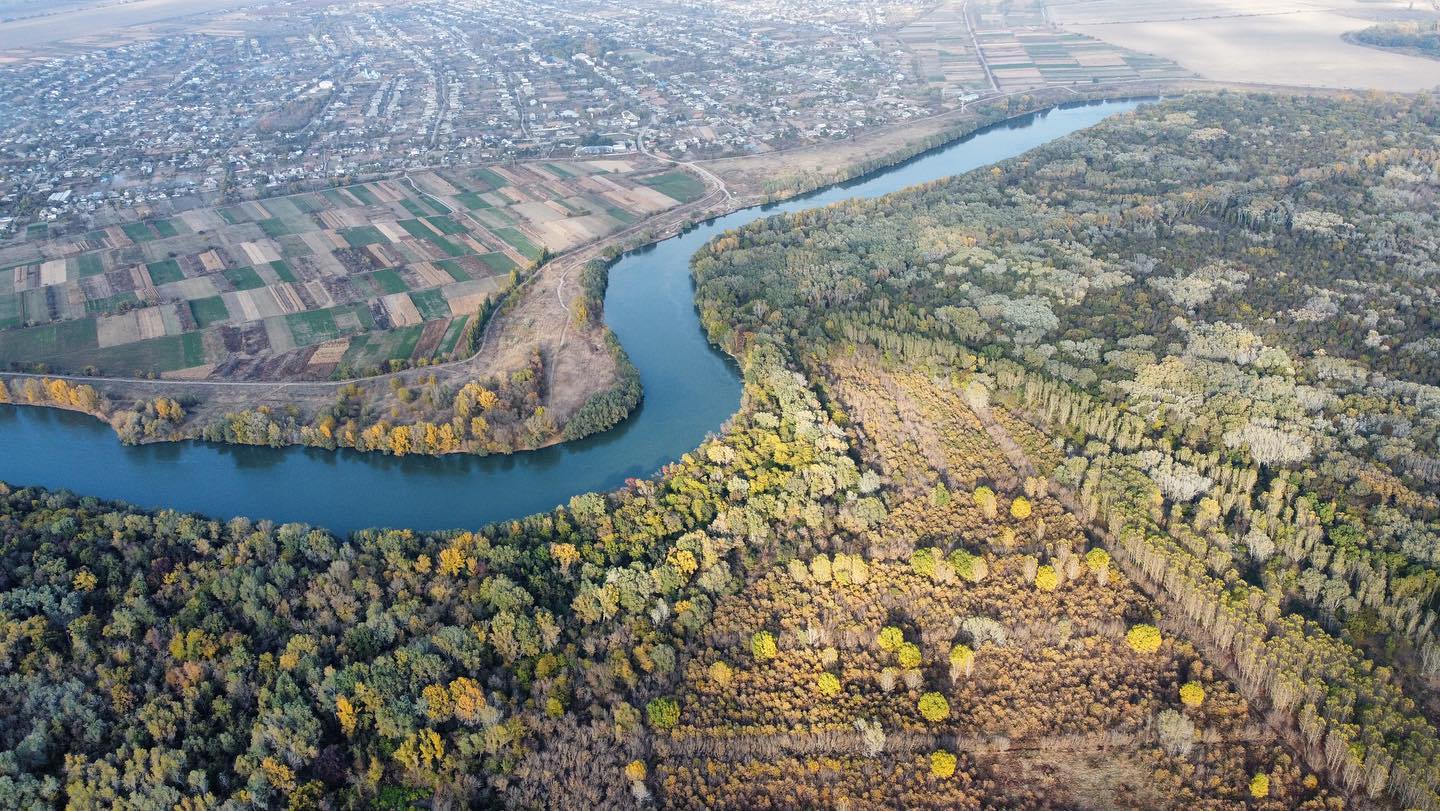
Discover Moldova with #MOLDPRES: Lower Dniester National Park, living example of friendship between man and nature
The lower part of the Dniester River and the villages of the region have undergone significant transformations, in order to create favorable conditions for the coexistence of man and nature. This occurs under the umbrella of the Lower Dniester National Park, established in March 2022.
Many confuse the national park with a scientific reserve. However, there are differences between the two.
A scientific reserve is a terrestrial and/or aquatic area where scientific research is conducted, aimed at conserving biodiversity. Therefore, activities that might affect the natural evolution of processes are prohibited here.
The national park, on the other hand, is a space which includes geographical features, landscapes, various species of plants and animals and places of cultural and historical value. Like a scientific reserve, a national park is established for scientific research. The difference is that recreational, economic, cultural, tourist, and other activities are allowed in a national park. It is important to note that a park still has an area that is fully protected like a natural reserve.
The Lower Dniester National Park covers an area of almost 62 thousand hectares within the boundaries of 20 localities from the districts of Stefan Voda, Causeni, and four localities on the left bank of Dniester.
The base of the National Park is the Ramsar wetland Lower Dniester, which is the most biodiverse wetland of Moldova, with 200 bird species, 83 fish species, and 1,000 plant species.
Particularly valuable are the old beds of Dniester of different ages, especially the Nistrul Chior (Blind Dniester), which is a natural monument with a length of about 42 km. Also here, there are the secular poplar forests, which have almost disappeared in Europe. In addition, there are ash riparian forests, which represent a European-important ecosystem, willow swamp riparian forests and tall herb meadows, which represent a deficient ecosystem in the region. Small but valuable remains of oak woods and steppe have also been preserved here. The land features are extremely varied. Among them, the system of curved meanders of Dniester and its old bed stand out. About 100 archaeological monuments are known within the park's territory.
The government approved the Law regarding the founding of the Lower Dniester National Park in March 2022. The protected area stretches over 62,000 hectares within the territorial borders of 13 localities located in the districts of Stefan Voda and Causeni and three settlements placed on situated on the left banks of Dniester.
The purpose of the National Park is to protect biological diversity, ensure the maintenance, conservation and rational use of natural resources. At the same time, the creation of this protected natural area ensures the preservation of natural complexes of major importance and provides an additional impetus for the development of settlements and attracting tourists.
The Lower Dniester National Park is structured into functional zones with distinct legal regimes: from strictly protected areas to implementing economic activities which do not contradict the regime of the national park.
In Moldova, there are several parks and natural reserves protected by the state, such as: Orhei National Park, scientific reserves Princely Forest, Codrii (The Forests) Iagorlîc, Lower Prut, Plaiul Fagului.
Correspondent: Lilia Grubii
Discover Moldova with #MOLDPRES: Beșalma - Gagauz village that keeps tradition and cultural identity alive
PHOTO // Moldova's tourism promoted among diplomatic corps through informative tour
Discover Moldova with #MOLDPRES: EtnoFest Taraclia - cultural bridge between communities, traditions, generations
Discover Moldova with #MOLDPRES: Lake Beleu, through lens of photojournalist Andrei Mardari
PHOTO GALLERY // Beleu Lake: where calm meets nature
PHOTO // Moldova captures audience at International Gastronomy Festival in Paris
Discover Moldova with #MOLDPRES: Cahul Land Museum – gateway to history, traditions of country's south
Discover Moldova with #MOLDPRES: Land of boundless vineyards, tradition, taste, unique autumn tourist experiences
Discover Moldova with #MOLDPRES: Constantin Stamati's mansion from Ocnita, journey into 19th century Moldova
Discover Moldova with #MOLDPRES: Goian – village where tradition meets nature and authentic tourism
Editor-in-Chief of National Geographic Polska explores Moldova
Discover Moldova with #MOLDPRES: Ivancea village, one of most picturesque and historically rich places
Discover Moldova with #MOLDPRES: GurmanIA Festival in Tarigrad, Drochia - deep roots, authentic flavors, vibrant traditions
Discover Moldova with #MOLDPRES: The Charm of Dniester – an ecotourism route connecting people with nature, local community
Bomb alert at Vălcineț border crossing point: Explosive BRAVO signal activated for Bucharest-Kiev train
VIDEO // Prime Minister urges people to buy local products as part of Buy GOOD from home campaign
New opportunities for exporting companies: China invites Moldova to international fairs
GIFT EXPO-2025 Exhibition: Moldexpo to host Moldova's only Christmas tree adorned by local producers
Draft law on mandatory health insurance funds for 2026 passed in first reading: more funds for medical services and compensated medicines
VIDEO // Parents can benefit from tax deductions for children's education: Minister of Education explains procedure
State Social Insurance Budget Law for 2026 approved in first reading: indexed pensions and increased allowances
State Budget for 2026 approved by Parliament in first reading
PHOTO GALLERY // Wine as art, an inauguration of exhibition of emotions
President of Cyprus, at meeting with Moldovan counterpart, says country's goal for Moldovan citizens to enjoy benefits of European integration as soon as possible
Extended benefits for Diaspora: what Moldovans need to do to benefit
Moldovan PM urges to cherish inherited cultural heritage, protect it for future generations
Zero rate extended, deductions for education, facilities for green energy in Moldova: what fiscal package approved in first reading includes
VIDEO // One decade of agricultural transformations: MAC-P concludes mission in Moldova with multiple development projects, support for farmers
Moldovan education minister has talks with teachers, students from Cahul
VIDEO// Moldova, Romania join forces against organized crime

